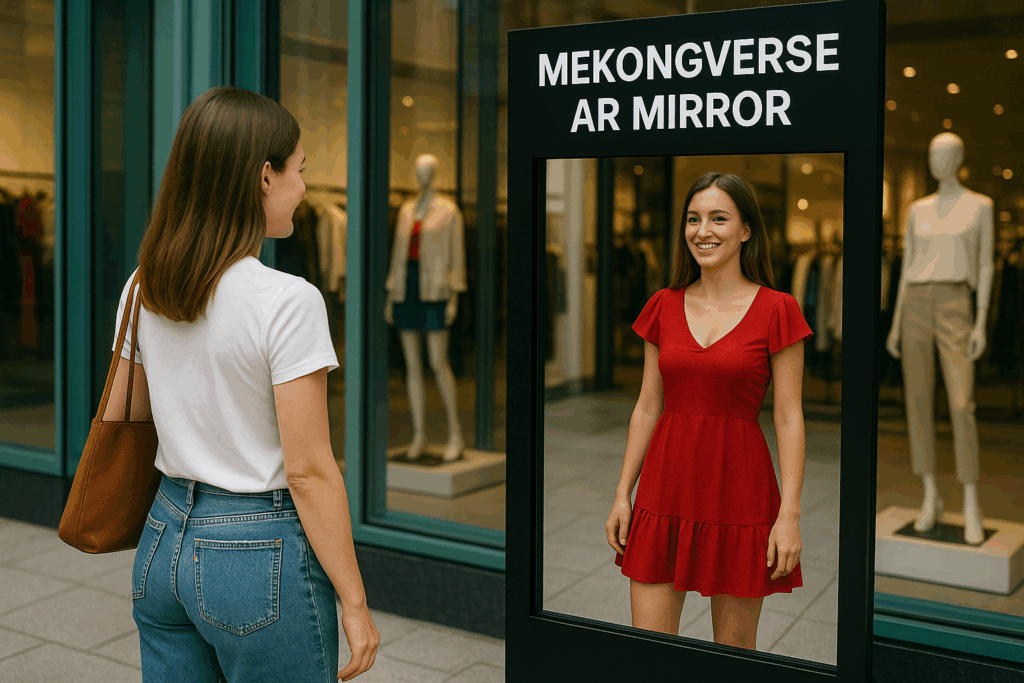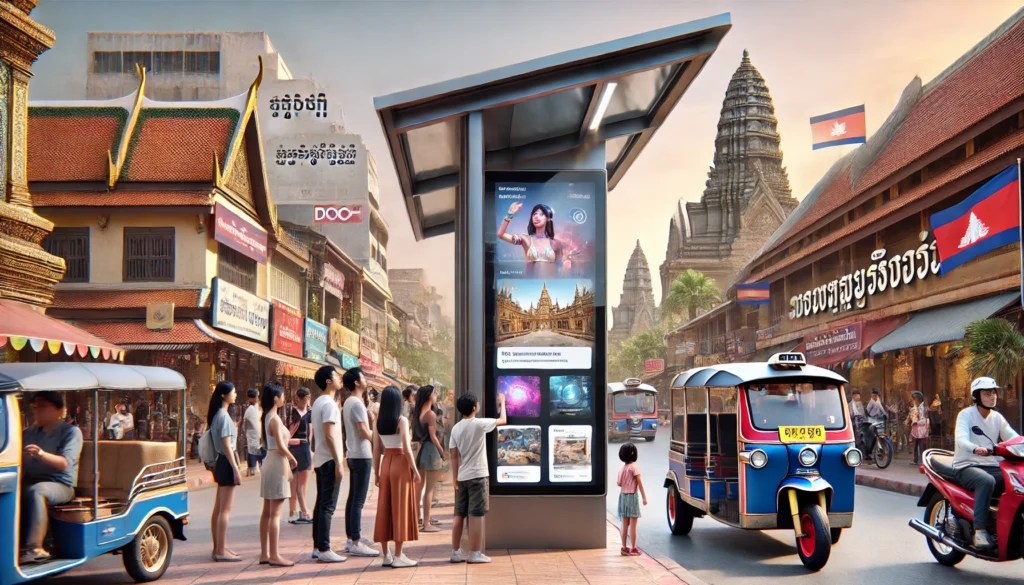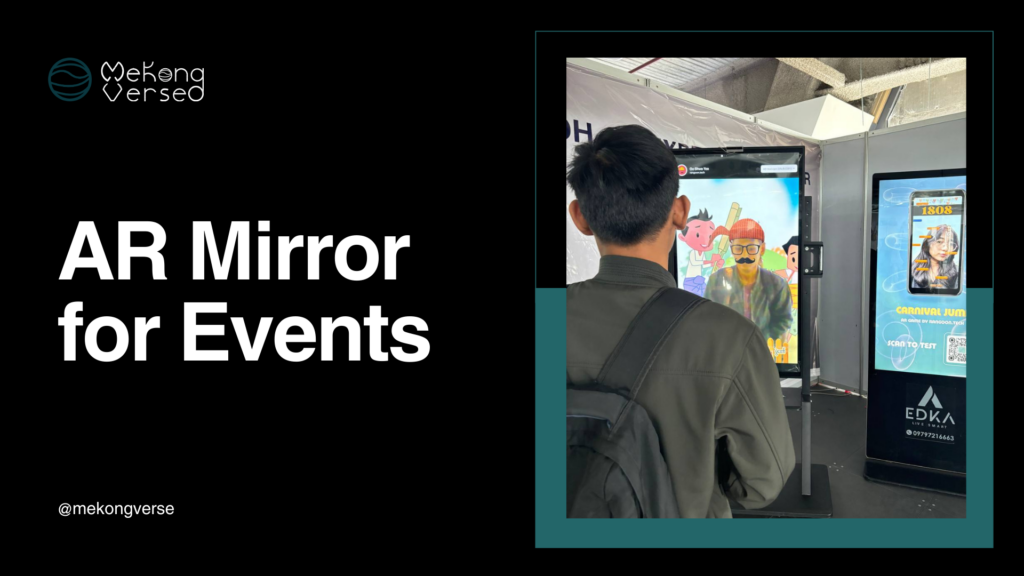Your store might be picture-perfect—clean, stylish, and seasonally on-trend—but somehow, shoppers stroll right past without stopping. The doors are open, the lights are on, yet the in-store footfall remains discouragingly low. Welcome to the modern-day dilemma faced by fashion retailers: the curious gap between foot traffic and actual store traffic.
The million-dollar question? Why aren’t they coming in? And more importantly—how can you make them stop and walk through that door?
Let’s explore how cutting-edge retail innovation, particularly AR Mirrors, is not just a gimmick—but a smart, strategic investment that turns passersby into paying customers.
The Foot Traffic Dilemma in Fashion Retail
Foot traffic refers to the number of people walking by your store. While this is a critical metric, it’s worthless if it doesn’t translate into actual store traffic—shoppers who walk in, engage with your products, and ideally make a purchase.
Traditional marketing tactics are no longer enough. In an era where consumer attention is dominated by smartphones, TikTok trends, and Instagram reels, static displays are too easy to ignore. Retailers must now ask: What makes people stop? What makes them curious enough to step inside?
What’s Stopping Shoppers from Coming In?
Despite high visibility, here’s why many retail storefronts fail to pull in foot traffic:
- Lack of visual uniqueness: Storefronts that blend in with others on the block are forgettable.
- Missing interactivity: Shoppers have no reason to stop without engagement.
- Outdated aesthetics: A dated or uninspiring window display implies what’s inside isn’t worth the time.
- No incentive: Without a hook (reward, entertainment, or surprise), there’s no urgency to enter.
Introducing the Game-Changer: AR Mirror Storefronts
AR (Augmented Reality) Mirror technology is redefining retail engagement. These interactive mirrors overlay digital effects—clothing, animations, games—onto a person’s live reflection. And the result? Instant attention, real-time personalization, and emotional connection.
Imagine this: A shopper sees themselves on your storefront screen wearing your latest outfit virtually. Or they play a short AR game that offers instant-win discounts. That’s a powerful first impression—and it’s often all you need to get them inside.
Why AR Mirrors Are Effective
AR Mirrors captivate because they:
- Grab attention in a sea of distractions.
- Create emotional bonds through personalization.
- Offer instant gratification with gamified rewards.
- Drive social sharing, turning your store into a viral hotspot.
In other words, you’re not just selling fashion—you’re selling an experience.
Success Stories from Global Retailers
Retailers who’ve integrated AR technology into their storefronts have witnessed dramatic results:
Bershka: Generated over 8,200 interactions in a single weekend thanks to AR-enhanced windows.
@bershka Our guests enjoyed our cool set of AR filters at the reopening store in Gran Via Madrid 😎⚡️ Discover them using the Bershka APP & visting the digital room 🫶 #ar #arfilter #fashion #bershka
♬ sonido original – BERSHKA
Fashionalia: Leveraged AR coupon games to boost store entries and sales conversion rates significantly.
Thélios x FFFACE.ME: Storefront-Based Virtual Try-On at Doha Airport
These aren’t just cool gimmicks. They’re strategic tools proven to convert passive interest into actionable traffic.
Making Passive Shoppers Active Buyers with AR Mirrors
Even small- to medium-sized retailers can leverage AR Mirrors without breaking the bank. Mekongverse’s plug-and-play solution only requires:
- A screen
- A webcam
- The AR Mirror software
Once installed, you’ve turned your window into a personalized, immersive stage—where each passerby sees themselves as part of your brand story.
The Psychology Behind Interactive Displays
People are naturally curious about their own reflection. Mix that with novelty, rewards, and instant fun—and you create the perfect psychological hook. AR Mirrors tap into:
- The Mirror Effect – We’re naturally drawn to our own reflection.
- Reciprocity – Free digital interactions make us more likely to return the favor (like walking in).
- FOMO – Seeing others engaging makes people want to join the fun.
How to Set Up Your AR Mirror Storefront
Here’s a simple checklist:
| Component | Description |
|---|---|
| Display Screen | 42” or larger LED screen for visibility |
| Camera | HD webcam to capture real-time reflections |
| AR Mirror Software | Provided by Mekongverse |
| Wi-Fi | For real-time content streaming |
| Content Strategy | Outfits, filters, games, and promotions |
Once live, you can monitor engagement metrics, track interactions, and adjust campaigns to optimize performance.
AR Mirrors vs. Traditional Window Displays
| Feature | Traditional Displays | AR Mirror Storefront |
|---|---|---|
| Static Visuals | ✅ | ✅ |
| Personalized Interaction | ❌ | ✅ |
| Social Media Shareable | ❌ | ✅ |
| Real-time Content Swap | ❌ | ✅ |
| Customer Engagement | Low | High |
The shift is clear: Interactivity equals impact.
Using AR Mirrors to Build Brand Loyalty
When customers interact with your AR Mirror, they’re not just engaging with tech—they’re connecting with your brand. Over time, this creates:
- Memorability
- Repeat visits
- Increased word-of-mouth
- Higher customer satisfaction
It’s not a gadget. It’s a brand experience that starts before they even walk in.
AR Mirrors and the Future of Retail Marketing
As retail increasingly competes with digital entertainment, stores must blur the lines between physical and virtual. AR Mirrors are a stepping stone to a broader strategy: phygital retail.
They also offer measurable ROI through:
- Engagement tracking
- Click-through on QR codes
- In-store conversions post-interaction
Turning Foot Traffic into Store Traffic
Still wondering how to turn foot traffic into store traffic? Here’s your answer: engage, delight, and reward. With AR Mirrors, you don’t just wait for shoppers to walk in—you give them a reason to.
FAQs
How much does an AR Mirror storefront cost?
Depending on the hardware and software provider, costs vary from $1,000 to $5,000. Mekongverse offers scalable options for different store sizes.
Do AR Mirrors work for small stores?
Absolutely. Even boutiques with small windows can see major benefits. Engagement doesn’t require massive space—just smart execution.
Is there a learning curve to using AR Mirrors?
Minimal. Most plug-and-play systems require only a brief setup and can be managed with basic tech skills.
How can I measure the ROI of AR Mirrors?
You can track metrics such as screen interactions, QR scans, discount code redemptions, and footfall spikes during campaigns.
What content works best on AR Mirrors?
Fashion overlays, gamified promos, seasonal themes, and social media filters tend to perform very well.
Can AR Mirrors integrate with my POS or CRM system?
Yes, many providers offer integration tools for tracking conversions and creating customer profiles.
Final Thought on How to Turn Foot Traffic into Store Traffic
Foot traffic alone is not enough anymore. You must connect, surprise, and involve. An AR Mirror storefront doesn’t just bring tech to your store—it brings people. And that’s what makes retail truly thrive.
Ready to explore AR for your store?
👉 Get the AR Mirror for Fashion Retail Proposal
📞 Schedule a call with our team



